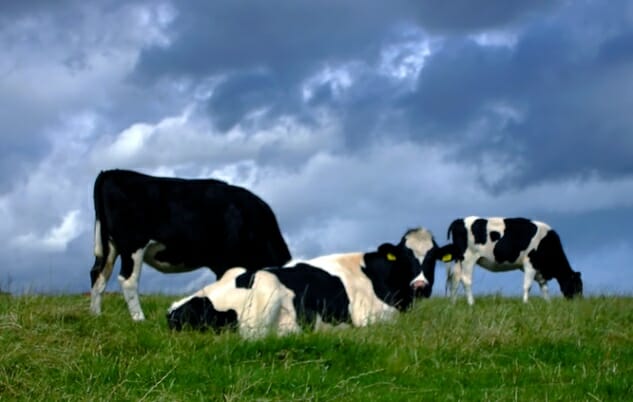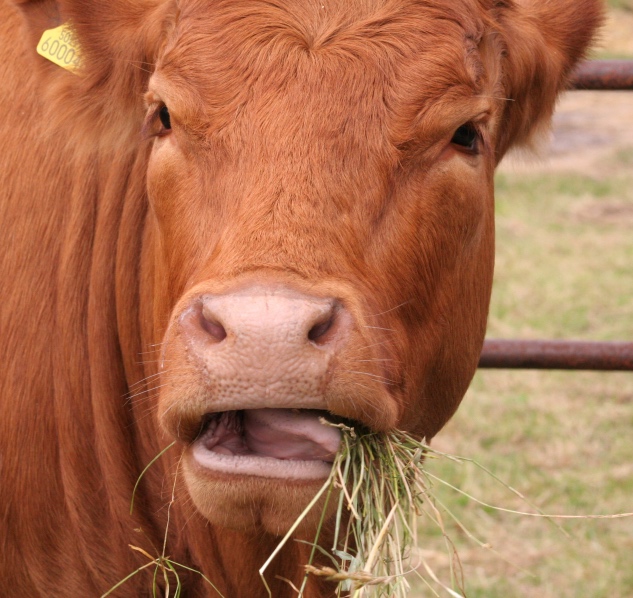
Often, when we talk about climate change, it seems like a far-off scenario. We talk in terms of saving the planet for future generations and predict disruptive sea level rise within the century. But the effects of climate change are already felt around the world; future changes will only intensify them.
![]()
When it comes to climate change and greenhouse gases, carbon dioxide often gets all the attention. It is the most prevalent greenhouse gas, but there are others to worry about, too. Methane claims the number-2 spot. In the U.S., it provides 11 percent of greenhouse gas emissions from our activity. In New Zealand, for comparison, methane is their number-one emission.
 Graph courtesy of EPA
Graph courtesy of EPA
Although methane (chemical name: CH4) is often ignored in favor of its overachieving cousin carbon dioxide, it’s still a very important player in climate change. The gas doesn’t remain in the atmosphere as long as CO2, but it is way more efficient at trapping radiation.
“Pound for pound, the comparative impact of CH4 on climate change is more than 25 times greater than CO2 over a 100-year period,” the Environmental Protection Agency reports.
So where does all that gas come from?
![]()
Four Legs, Four Stomachs, Lots of Gas
Methane is, of course, released from natural sites like wetlands. But the majority comes from human activity.
Part of it is released when we drill or dig for fossil fuels—coal, natural gas, and oil—and then transport it. Methane is the primary component of natural gas, and leaks occur in both production and transportation of natural gas. And some methane is released when organic matter decays at landfills (in the U.S., landfill gas is usually trapped and burned off). That’s part of what makes the dump so smelly; it’s passing gas, in addition to housing all that trash.
A third and very significant source of methane emissions come from agriculture and land use—particularly raising livestock.
Basically, cows are contributing to climate change.
This happens in two ways. First, during the digestive process, animals with ruminant digestive systems produce a lot of gas—methane. And methane is also produced when their manure, often collected in tanks for use as fertilizer, decomposes.
Of course, cows aren’t the only four-legged culprits; buffalo, sheep, goats, deer and camels also produce large amounts of methane as they eat. What do they all have in common? Let’s ruminate on those “ruminant digestive systems” a bit more.
 Photo by John Haslam
Photo by John Haslam
![]()
Burps and Farts
Ruminant animals have four stomachs, which is where they digest their food—unlike us humans, who break down our meals in our intestines. This four-chambered system is why cows eat food, regurgitate the cud, and eat it again.
The digestive process is helped along by fermentation and stomach bacteria. But as these processes break down each meal, they release the byproduct methane. Each time a cow belches or farts, it releases methane. (Scientists prefer to call this entire digestive process “enteric fermentation,” probably because that sounds more impressive at parties—like some cool new craft beer.)
About 90 million cows roam U.S. ranges each year, with a total of 1.5 billion heads of cattle living on the planet. While other ruminant animals do emit methane, about 55 percent of emissions come from beef cattle. (Dairy cows are counted among the other four-stomached animals accounting for the rest of methane emissions from livestock.)
Considering that ruminant livestock—especially gassy cows—can produce 250 to 500 liters of methane per day, it really adds up.
![]()
Ban Beef?
While methane emissions from fossil fuel exploration have declined in recent years, agricultural emissions are on the rise they’re predicted to go up another 30 percent by 2050.
But we can’t really blame our four-stomached friends. The reason these emissions are going up is because of us humans. Around the world, we’re raising more cattle and other ruminant animals for meat and dairy products.
Eating meat is a status symbol in much of the world. Australia and the United States still lead in consumption, with more than 200 pounds of meat filling our bellies each year. But other countries are starting to catch up.
China consumes about half as much meat as we do, but their consumption has exploded in the past twenty years—and when you’re talking about 1.4 billion people, a trend like that is significant. Brazil, Indonesia, India and other countries—many with huge populations—are growing more affluent, and meat consumption rises with social status. (India, of course, has a beef with eating cows, but not other ruminant animals.)
As more people across the globe move into the middle class, the demand for beef and other methane-intensive meat will only go up.
However, it’s not all doom and gloom (and burps and farts). Next week, we’ll talk about what farmers and scientists are doing to reduce emissions—from capturing the methane to creating a Beano for bovines.
Top image: Maciej Lewandowski CC BY-SA 2.0
Melody Schreiber is a freelance journalist based in Washington, DC.